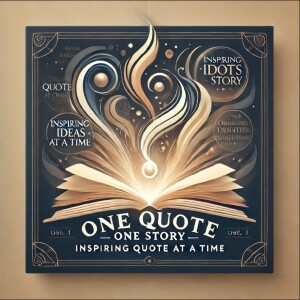

Taking Maths Further Podcast
http://feeds.feedburner.com/TakingMathsFurtherPodcastEpisode List

Episode 14: Maths and Art
This week the topic was maths and art. We interviewed Edmund Harris, who spoke about his work using different media to engage people with mathematics, including his work creating art with a mathematical basis. We discussed his work with tilings and how he uses maths in his work. Interesting links: Edmund's website Edmund's Blog where he posts some examples of his work Mathematical Imagery page at the American Mathematical Society Wallpaper Patterns at EscherMath Puzzle: Look for examples of tilings in the world around you - patterns which repeat, or have reflection symmetry, and see how many you can find.

Episode 13: Vectors, matrices and hearing
This week the topic was vectors and matrices. We interviewed Dave Langers, who studies the human brain, and how it processes hearing signals. We talked about how Dave uses matrices and vectors to store information from brain scans, which allow him to manipulate the information more easily. Interesting links: Matrices, on Khan Academy Matrices at Maths is Fun Matrix multiplying at Maths is Fun Auditory system on Wikipedia Puzzle: Using the vectors (1,3,1,3), (2,2,6,6) and (4,8,8,12), by taking multiples of each and adding them together, find a combination which adds up to (0,0,0,0). You must use all three vectors at least once. Solution: 2 × (1,3,1,3) - (2,2,6,6) - (4,8,8,12) = (0,0,0,0) This can be achieved using other combinations too - for example, if you multiply all the vectors on the left of this equation by the same number, you’d also get a zero vector. Show/Hide

Episode 12: Regression and traffic management
This week the topic was data analysis. We interviewed Judith Elgie from INRIX about her work as a data analyst, and how she uses computers to analyse and predict the movement of vehicles on the roads, to generate information about where traffic jams are and which roads are clear. Interesting links: Introduction to regression lines by least squares, from m4ths.com Simple linear regression resources from Statstutor.ac.uk Traffic reporting, on Wikipedia Traffic information, on the UK Highways agency website Puzzle: A lorry can travel from point A make a delivery at point B, 70 km away, in 1 hour. Today, however, after 30 minutes at the normal speed, the lorry is forced to stop for ten minutes. Resuming the journey, can the lorry arrive on time without breaking the 70mph speed limit? Solution: On a normal journey, the lorry travels 70km in 1 hour, which we can assume is a constant speed of 70km/h. Today, they travel at this speed for half an hour: 70km/h × 0.5h = 35km (this is also half the distance, as you would expect. The other 35 km must be travelled in 20 minutes, i.e. one third of an hour, so to calculate the speed needed we can divide 35 / (1/3) = 35 × 3 = 105 km/h. If we convert this to miles per hour, 105km/h is 65.3mph - so everything is legal. Show/Hide

Episode 11: Programming and boolean algebra
This week the topic was boolean algebra. We interviewed Robie Basak, who's a computer programmer at Canonical, about his work on the Ubuntu operating system, and how he and his colleagues use mathematics and mathematical thinking in order to write computer software. Interesting links: Canonical Website Ubuntu website Boolean Logic, at HowStuffWorks Domino computer video Blog post from Tanya Khovanova, on logic puzzles Knights and Knaves puzzles and examples, Wikipedia Knights and Knaves puzzles, on Maths is Fun Puzzle: Anna and Bill are residents of the island of knights and knaves. Knights always tell the truth, and knaves always lie. Anna says "We are both knaves.” What kind of person are Anna and Bill? Chris and Diane are also residents of the island of knights and knaves. Chris says "We are the same kind", but Diane says "We are of different kinds”. What kind of person are Chris and Diane? Solution: Anna states they are both knaves; this can’t be true, as if it were she would be a knave and therefore would be lying. So, the statement must be false, and Anna is therefore a knave. Also, since she always lies, they can’t both be knaves, so Bill must be a knight. In the second example, the two give different answers, one of which must be true, so one of them must be lying, and therefore Diane is telling the truth. This means Chris is a knave and Diane is a knight. Show/Hide

Episode 10: Numbers, infinite and music
This week the topic was types of numbers and infinity. We interviewed Dorothy Ker, who’s a musician and composer. We talked about the way Dorothy uses maths to inspire her creativity, as well as the types of maths that composers and musicians use. Interesting links: "A gentle infinity" - One of Dorothy's compositions Amelia and the Mapmaker, the project on the Poincaré conjecture Jorge Luis Borges, on Wikipedia Marcus Du Sautoy on Borges for BBC Radio 4's Great Lives Recounting the rational numbers, at The Math Less Travelled Puzzle: Which are there more of: whole numbers, or square numbers? (If you think the answer is obvious, try counting them). Solution: It may seem obvious to say that there are more whole numbers than square numbers - if you start counting, by the time you reach 20 you’ve counted 20 whole numbers but only 4 square numbers, and the square numbers only get further apart as you go up the number line. The set of all square numbers is contained in the set of all whole numbers, and it’s definitely smaller in some sense, as not all whole numbers are square. However, since there are infinitely many square numbers, it’s possible to count them in the same way you count the whole numbers. Each square is paired up with its own square root - 1 with 1, 4 with 2, 9 with 3 and so on - so there are countably infinitely many square numbers, and since for any whole number I can find a corresponding square number by simply squaring it, these sets are considered to be the same size. Show/Hide
You may also like
Create Your Podcast In Minutes
- Full-featured podcast site
- Unlimited storage and bandwidth
- Comprehensive podcast stats
- Distribute to Apple Podcasts, Spotify, and more
- Make money with your podcast












